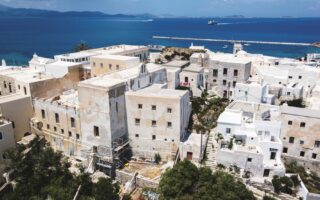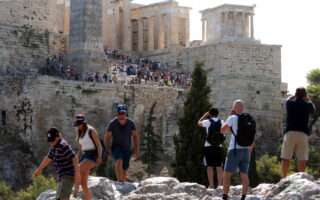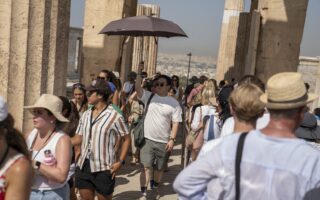At Antikythera, we search for wisdom
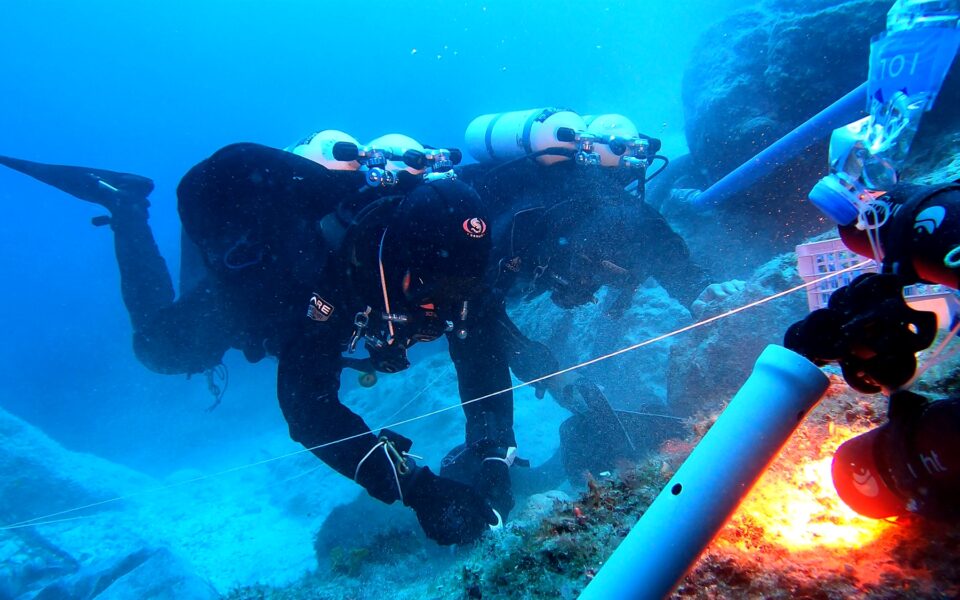
Our small boat was dancing on the waves in winds gusting up to 6 Beaufort, while the divers performed the final checks before their descent to the depths off Antikythera, a small Greek island roughly halfway between the southern tip of the Peloponnese and Crete. I turned my head to gaze at the steep cliffs, and felt a shiver run down my spine. Back in the Roman era, just before the birth of Christ, a ship had crashed against the rocks. It was as if I could visualize the severe collision amid the tumultuous sea, the desperation of those on board, and the precious cargo scattered on the seabed. I had visited this place before, in 2014, when the underwater explorations of the wreck resumed, yet the same sense of awe washed over me at the realization that the world’s most famous ancient shipwreck lay just a few meters below us.
Beside me stood Lorenz Baumer, a professor of classical archaeology at the University of Geneva, who is co-director of the mission with Angeliki G. Simosi, the head of the Ephorate of Antiquities of Piraeus and the Islands. Being of true Swiss character, he managed to control his emotions. It was understandable, as he was overseeing an underwater operation without being a diving archaeologist. All the guidance had to be prepared on land or from the boat with the assistance of technology and the collaboration of his Greek colleague, who herself had spent several days on the research. Thus, the two of us, along with the Swiss team, were on the vessel, filled with anticipation akin to someone waiting outside a delivery room.
I asked him how he felt, and with his good command of modern Greek he replied, “Enthusiasmo!” (Greek for enthusiasm). I took the opportunity to ask him the obvious question: What were we expecting to find on the seabed this year? Naturally, my imagination ran wild. I envisioned the divers bringing up a bronze statue from that era – a total of 50 pieces are known to survive at the moment – or perhaps even more extraordinarily, a piece of the missing mechanism. Baumer looked at me seriously and emphasized, “We are searching for one thing on the seabed,” then paused for a moment. “Wisdom! Delving into history, whether on land or in the sea, potentially disrupts the conditions that have preserved these objects untouched from antiquity to the present day. We must be extremely careful, patient and temperate, and not get carried away by enthusiasm. A shipwreck is a site of tragedy, and we are called to conduct an autopsy 2,000 years later. A wrong move can cause enormous issues.”
He continued his reasoning: “You know, in our work, even a tiny fragment from a vessel or a piece of marble, or even a nail, can provide us with crucial information. It can help us understand how the ship sank, where it came from, where it was heading, what else it carried, and who was on board. I assure you that even these humble fragments are of incalculable value, just like a statue.”
Swiss-style approach
We sought refuge in the helmsman’s small cabin as the forceful gusts of wind obstructed any conversation. This marks the third consecutive year of joint collaboration between the Swiss and the Greeks on this mission. I couldn’t help but notice a contrast in mindset. The Swiss-style approach, characterized by extensive preparation, meticulous data collection, and thorough processing, significantly enhanced the precision of the underwater research. After all, the shipwreck rests in a region notorious for its rough seas, and even in May when the dives are conducted, unpredictable harsh weather can strike.
From 2014 until the present, adverse weather conditions have been one of the most significant challenges for the divers. However, this year, even the intervals away from the sea held considerable significance, as I personally observed. A scientific laboratory has been established on Antikythera, facilitating the immediate processing of stratigraphic samples from the seabed. Moreover, two Greek scientists, Maria Louloudi, a chemistry professor at the University of Ioannina, and a colleague from the same university, physics professor Yiannis Deligiannakis, brought an FTIR spectrometer. This invaluable tool facilitated the analysis of sand samples from the seabed, guiding archaeologists to points with a higher likelihood of finding artifacts.
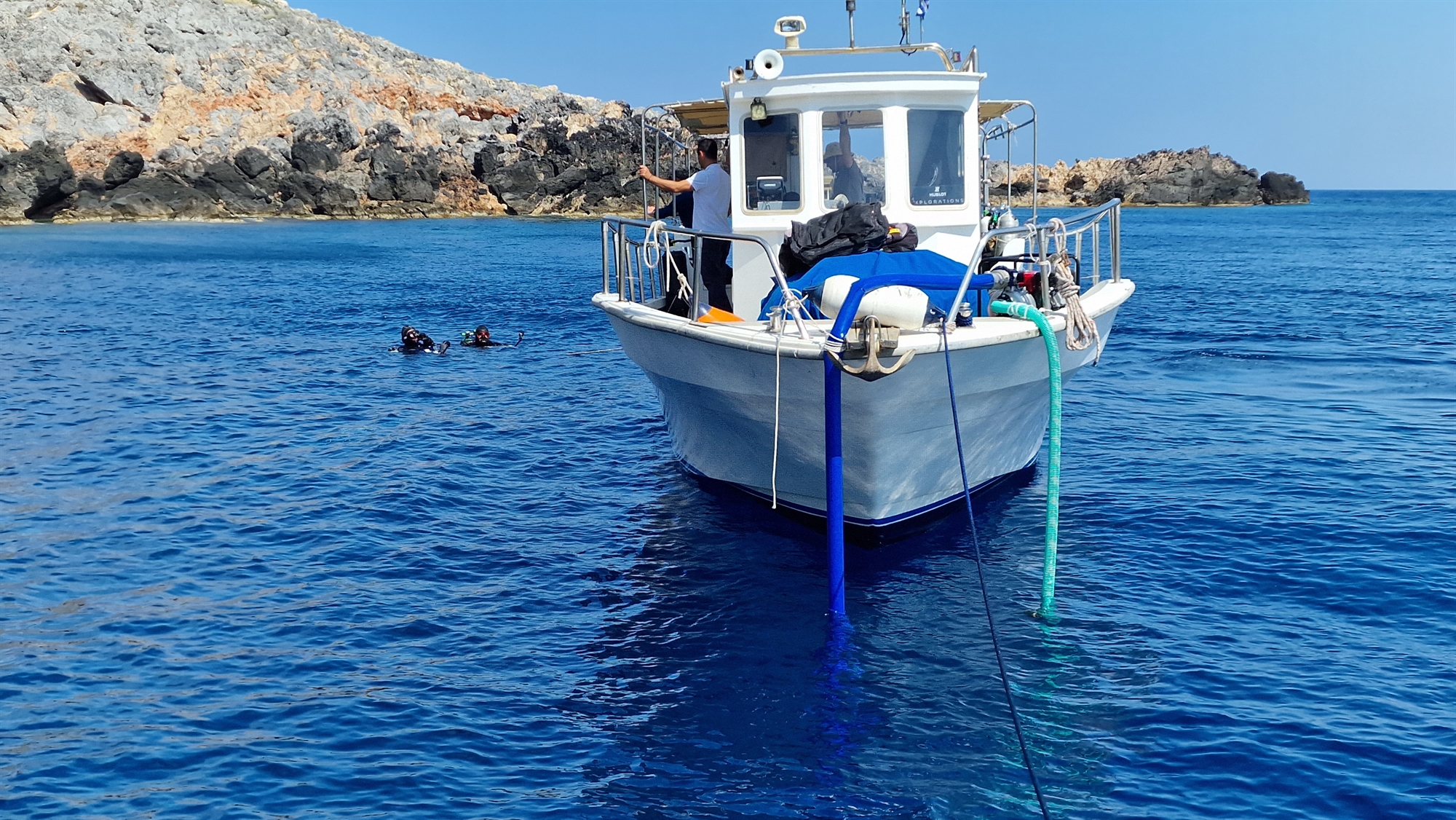
They lifted boulders
Baumer’s excitement stemmed not from the anticipation of finding something extraordinary this year but rather from the fact that, as he explained, it marked the first year they had the opportunity to explore areas of the shipwreck previously concealed by massive boulders, each weighing several tons. These boulders had fallen onto the wreck during earthquakes centuries after the shipwreck, obstructing excavation in parts of the cargo hold. The “Return to Antikythera” project, funded by Swiss luxury watchmakers Hublot, had established a dedicated research division for the shipwreck and ingeniously devised a solution to lift the boulders using underwater balloons. The Swiss co-director proudly showcased this highly impressive operation through video footage from his mobile phone.
The most remarkable discovery came from the samples obtained from beneath the boulders, where they found human teeth and microscopic fragments of marble. It appears that the ship’s hull not only disintegrated from the impact before sinking, but also endured the weight of these colossal boulders that fell on it centuries later.
An old vessel
This year, the divers concentrated their efforts on previously untouched sections of the wreck, areas that were inaccessible to both the Symian sponge divers who first discovered the shipwreck in 1901 and the renowned French marine explorer Jacques Cousteau in 1976. Baumer suggested that there might be statues hidden in these parts. Moreover, he explained that previous research by the Symians and the Frenchman did not provide precise information on the locations where they retrieved objects within the vast expanse of the wreck, which has varying depths and levels. “However, our meticulous work has now yielded a three-dimensional photographic map covering the entire radius where artifacts are scattered. Furthermore, last year, we found a head of Hercules. The heaviest items sink almost vertically, akin to anchors, while lighter ones float down. Thanks to this head, we can speculate about the location of the heaviest part of the cargo,” he said.
As for what we know so far about this famous ship, Baumer shared a significant discovery: “It was an ancient vessel that spent several decades at sea before sinking. It had undergone multiple repairs, indicating its storied history. Additionally, we know it was a large, sturdy, and extensively traveled merchant ship. Human remains, including those of a woman, have been identified through anthropological studies. Whether she was a passenger or a slave remains uncertain. There is still much more to uncover,” he added.
I realized that the upcoming year of research would be pivotal, as many hindrances faced by the team in pinpointing specific areas have been resolved in 2023. Moreover, the thorough analysis of the data already collected by the scientists will either strengthen their current leads or guide them in a different direction. Now, the most significant progress is being made on land, whereas in 1901 and 1976, the divers had to search blindly in the sea. Thus, in the years to come, we might finally find answers about this extraordinary ship, whose name is still unknown, as it journeyed through numerous ports of the Mediterranean before arriving at the edge of the Aegean Sea, en route to Rome or elsewhere.
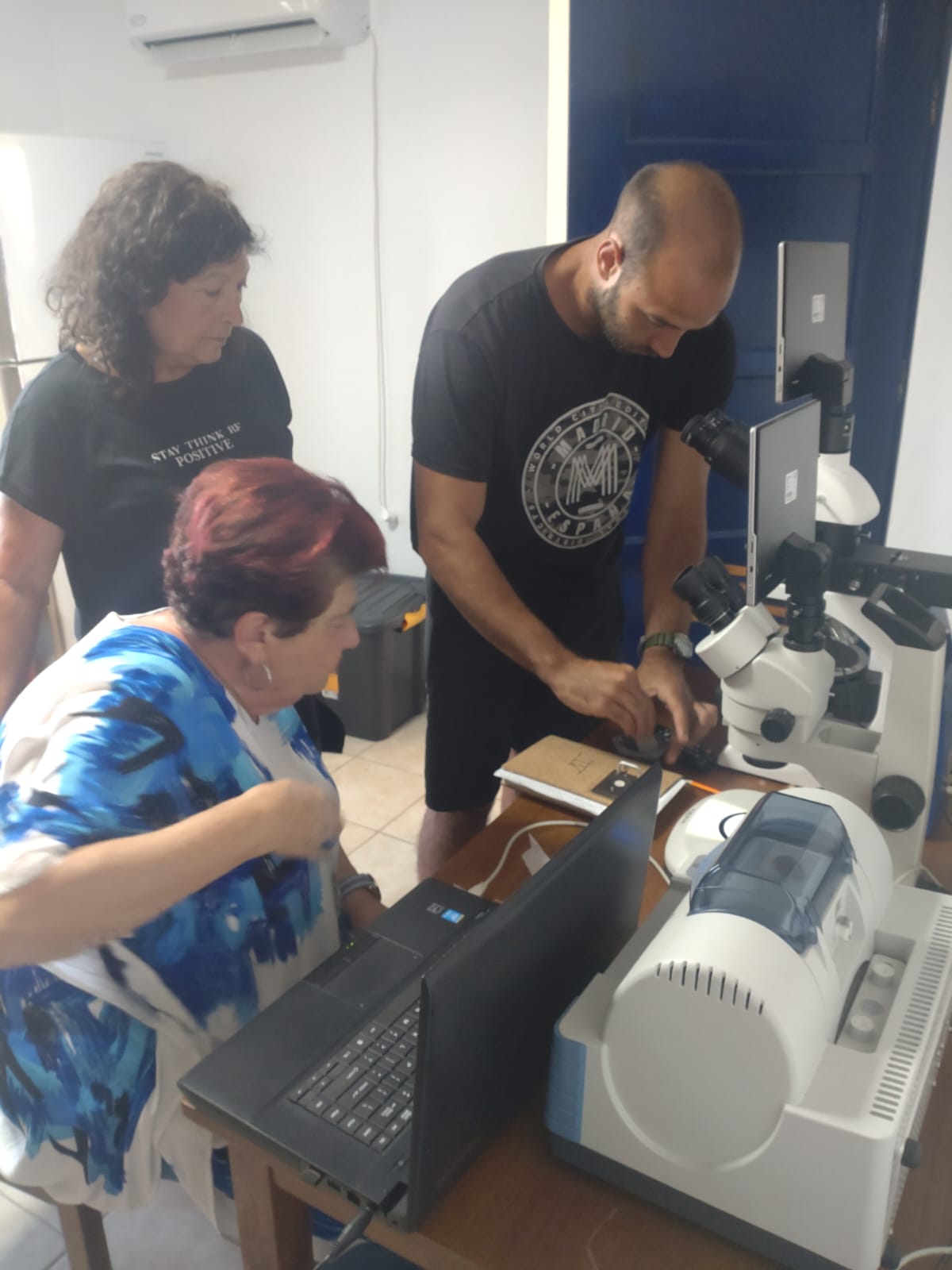
What was found this year?
During our interview with Lorenz Baumer in late May, the divers had only made two descents to the seabed. However, by the conclusion of the mission on June 18, the research had already produced intriguing findings. Fragments of early Byzantine ceramic vessels were identified, suggesting that a Byzantine ship had also sunk along the rugged coastline we were observing. Additionally, small bits of sculptures were brought to the surface. One of these fragments possibly originates from a bust or a statue, which could be what the head of Hercules was attached to, though it remains unconfirmed. The identities of the other sculpture pieces are still unknown at this point. Furthermore, additional human bones were discovered, potentially belonging to more than one individual who perished in the shipwreck, along with numerous characteristic objects from the vessel, such as fragments of pottery and glass vessels, as well as many wooden-sheathed nails.
After bidding farewell to the divers and Baumer, who was celebrating his wedding anniversary that day, I asked him how he felt about being apart from his wife on the occasion. He responded with a laugh, saying: “I met her back in school, and she knows the man she married. I believe she is very happy because she knows that the most important thing an archaeologist can find is not an object but knowledge. Modern humanity still knows very little about how our ancestors lived. So, I am here for that knowledge.”
He came to my mind as I sat at an open-air cinema in Athens watching the return of the legendary hero, Indiana Jones, in the fifth installment of the swashbuckling film series, holding what was supposed to be the Antikythera Mechanism. I overheard someone behind me expressing disbelief: “What nonsense! That thing never existed.”



